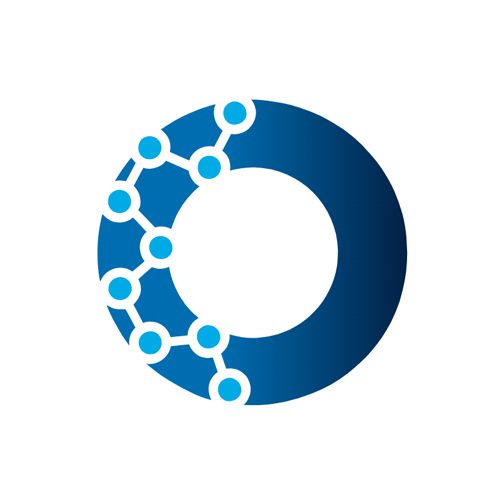Maintaining consistency and reliability is paramount in database systems. Whether you’re managing financial transactions, storing critical business data, or powering large-scale applications, the principles of ACID compliance guarantee that your database performs predictably, even under pressure.
Components of ACID
The term ACID represents four essential properties that a database must maintain during a transaction:
1. Atomicity
Atomicity guarantees that a transaction is treated as a single, indivisible unit. Either all operations in the transaction are executed or none at all. For instance, atomicity rolls back a banking transaction if the system debits money from one account but fails to credit it to another.
Key Mechanism: Rollback mechanisms undo incomplete transactions when errors occur.
2. Consistency
Consistency guarantees that the database transitions from one valid state to another by following predefined rules, constraints, and data integrity checks. If any rule is violated, the system aborts the transaction.
Key Mechanism: Database triggers, constraints, and validation checks enforce consistency.
3. Isolation
Isolation guarantees that transactions execute independently without interfering with each other. When multiple users access the database concurrently, the system allows each transaction to operate independently, preventing issues like dirty and phantom reads.
Key Mechanism: Locking protocols and isolation levels, such as Read Committed, Repeatable Read, and Serializable, effectively manage concurrent transactions.
4. Durability
Durability assures that committed transactions remain permanent, even during power outages or system crashes. This reliability is crucial in supporting applications like e-commerce and financial services.
Key Mechanism: Write-ahead logging (WAL) and backup mechanisms confirm the permanence of committed changes.
What is ACID Compliance?
ACID compliance refers to a database’s adherence to the four components of Atomicity, Consistency, Isolation, and Durability. It assures that transactions are processed reliably, safeguarding data integrity and security, even in complex systems.
In essence, ACID compliance is the hallmark of dependable database systems, enabling them to handle failures, concurrency, and scalability while maintaining accuracy.
Why Does ACID Compliance Matter?
- Data Integrity: Guarantees reliable transactions even during system interruptions.
- Error Recovery: Prevents partial updates or data corruption in case of failures.
- Concurrency Management: Enables simultaneous transactions without conflicts.
- User Trust is essential for industries like banking, healthcare, and e-commerce, where data integrity builds customer confidence.
How to Achieve ACID Compliance
Achieving ACID compliance requires a blend of careful database design, robust transaction management, and adherence to best practices:
Database Design
A well-structured database is the foundation of ACID compliance.
- Data Integrity Rules: Establish explicit constraints such as primary keys, foreign keys, and unique values to guarantee data consistency.
- Normalization: Normalize the database schema to eliminate redundancy and prevent anomalies during insert, update, or delete operations.
- Triggers and Checks: Use triggers and integrity checks to enforce business rules automatically at the database level.
Transaction Management
Effective transaction management is critical for achieving Atomicity and Durability.
- Transactional Commands: Use SQL commands like BEGIN, COMMIT, and ROLLBACK to define transaction boundaries and enable reversibility.
- Rollback Mechanisms: Implement rollback mechanisms to undo partial updates if a transaction fails, ensuring atomic execution.
- Write-Ahead Logging (WAL): Maintain a log of changes to guarantee durability, recording them before applying updates to the database.
Concurrency Control
Concurrency control guarantees that multiple transactions can operate simultaneously without compromising Isolation.
- Locking Mechanisms: Use row-level or table-level locks to prevent conflicts. For instance, when one transaction modifies a record, others cannot read or write to it until the lock is released.
- Isolation Levels: Set appropriate isolation levels (e.g., Read Uncommitted, Read Committed, Repeatable Read, Serializable) to balance consistency and performance based on application needs.
- Deadlock Prevention: Implement algorithms to detect and resolve deadlocks, ensuring smooth transaction execution.
Durability Assurance
Durability guarantees that committed transactions persist even during system failures.
- Backup Strategies: Schedule regular backups to safeguard data against hardware or software failures.
- Crash Recovery: Implement recovery mechanisms that rebuild database states from transaction logs after unexpected shutdowns.
- Distributed Systems: In distributed databases, consensus algorithms like Paxos or Raft replicate committed transactions across nodes.
Testing and Monitoring
Continuous testing and monitoring guarantee the effective implementation of ACID principles.
- Stress Testing: Simulate high transaction loads to assess the database’s ability to maintain ACID compliance under pressure.
- Audit Logs: Maintaining detailed logs to track transaction histories enables error detection and recovery.
- Monitoring Tools: Use database monitoring tools to identify performance bottlenecks and enforce compliance dynamically
ACID-Compliant Databases
While most relational database management systems (RDBMS) are designed with ACID compliance in mind, specific databases and technologies have become benchmarks for their implementation.
1. Relational Databases
Relational databases are the traditional champions of ACID compliance, thanks to their structured design and transaction-oriented approach.
- MySQL: When paired with the InnoDB storage engine, MySQL achieves full ACID compliance. Its robust transaction support and reliability make it popular for web applications and data-driven solutions.
- PostgreSQL: PostgreSQL strictly adheres to ACID principles and supports advanced features like multi-version concurrency control (MVCC). It is widely used in applications where data integrity and security are non-negotiable.
- Oracle Database: A heavyweight in enterprise environments, Oracle Database provides exceptional ACID compliance with advanced recovery options, scalability, and performance optimization.
- SQL Server: Microsoft’s SQL Server is another strong contender, offering seamless ACID compliance with integrated tools for high availability and disaster recovery.
2. Distributed Databases
As applications scale globally, distributed databases combine ACID principles with high availability and fault tolerance.
- Google Spanner: A groundbreaking distributed database, Google Spanner offers horizontal scalability without sacrificing strong consistency. Its global synchronization capability assures ACID compliance even in multi-region deployments.
- CockroachDB: Built for resilience, CockroachDB replicates data across nodes while maintaining strict consistency. Its SQL compatibility and fault-tolerant architecture make it a go-to choice for scalable, ACID-compliant applications.
3. ACID in NoSQL Databases
While NoSQL databases traditionally prioritize performance and scalability over strict consistency, some have evolved to offer ACID compliance for critical use cases.
- MongoDB: Known for its flexibility, MongoDB provides ACID-compliant multi-document transactions starting from version 4.0. This enhancement bridges the gap between traditional RDBMS and NoSQL solutions for applications requiring strong consistency.
- Couchbase: With tunable consistency options, Couchbase supports ACID principles for individual transactions while maintaining high-speed performance for distributed applications.
4. Hybrid Databases
Hybrid databases seamlessly integrate relational systems’ ACID properties with NoSQL technologies’ flexibility.
- Amazon Aurora: As a managed relational database compatible with MySQL and PostgreSQL, Aurora supports ACID compliance while delivering the scalability and speed of cloud-based solutions.
Final Thoughts
ACID compliance is the backbone of reliable and secure database systems. Its principles assure that data integrity and consistency remain intact even in the face of hardware failures, concurrent transactions, or power outages.
As businesses rely on data-driven decision-making, understanding and implementing ACID compliance is crucial for operational excellence. Whether you’re developing financial applications, e-commerce platforms, or healthcare systems, ACID compliance should be a priority in your database strategy. Organizations can create systems that inspire trust and deliver seamless user experiences by balancing performance with reliability.













